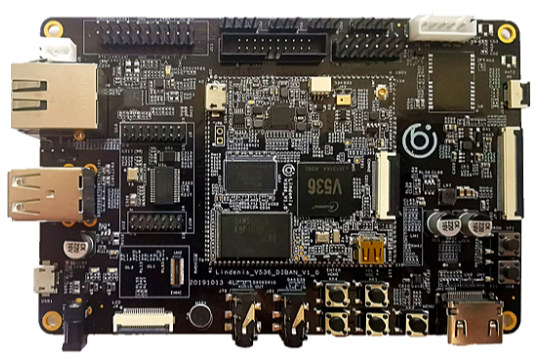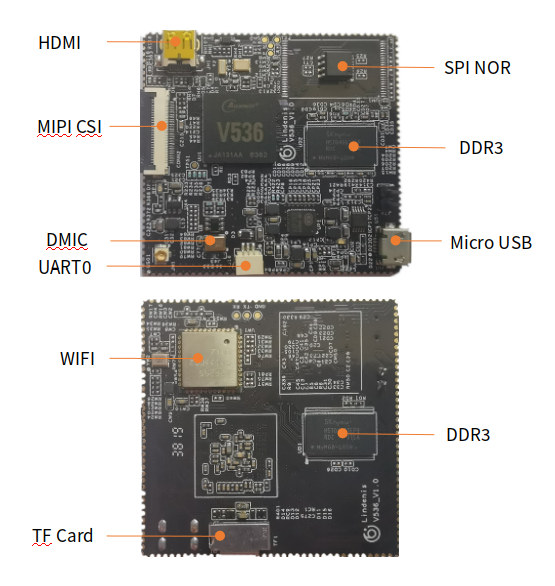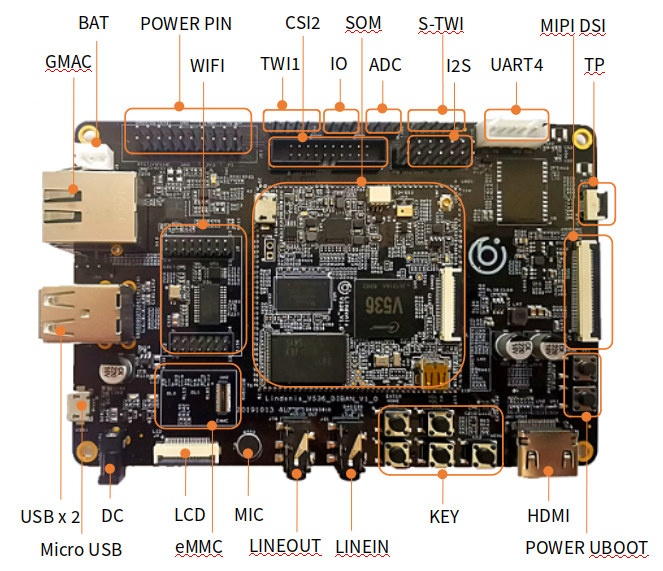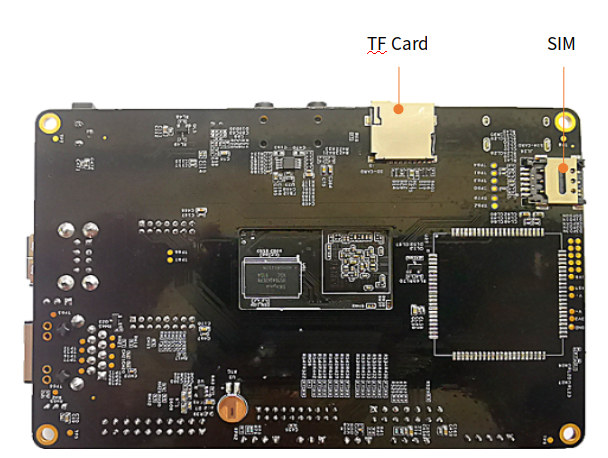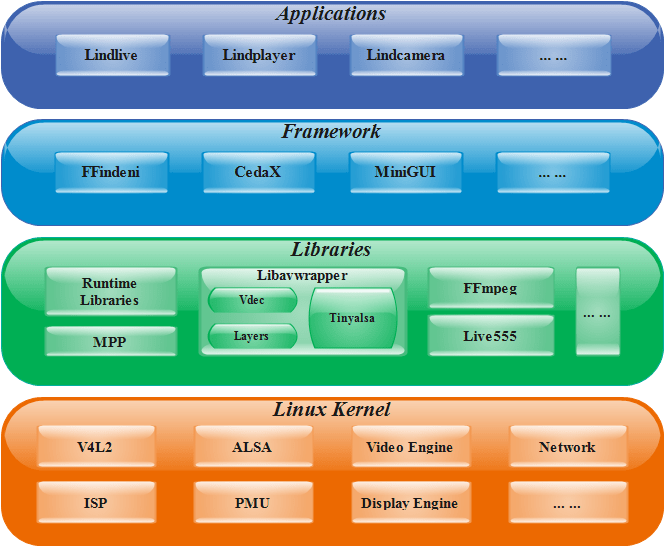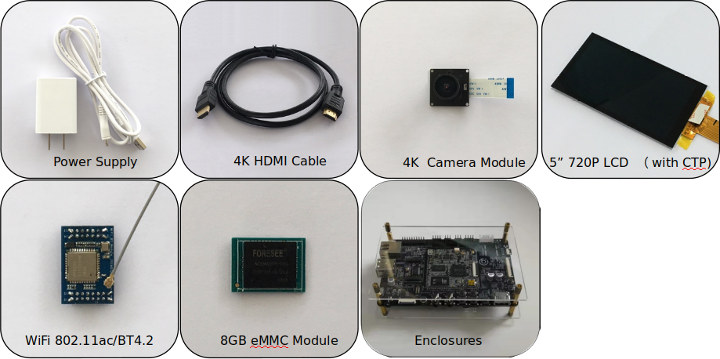Back in summer 2018, we wrote about Lindenis V5 single board computer based on Allwinner V5 quad-core Cortex-A7 processor with two MIPI CSI connectors and designed for 4K cameras.
Allwinner has now come up with a new 4K camera processor very similar to V5, since Allwinner V566 comes with two Cortex-A7 cores, and a single MIPI CSI interface, and Lindenis designed a new SBC based on the new processor using a SoM + baseboard design instead.
Lindenis V536 specifications:
- SoM

- SoC – Allwinner V536 dual-core Cortex-A7 processor @ 1.2 GHz; 4K H.265/H.264 video encoding & decoding @ 30 fps; 28nm process
- System Memory – 1GB DDR3
- Storage – SPI NOR flash or SPI NAND flash, bootable MicroSD card
- Video Output – Micro HDMI 1.4 port
- Video Input – MIPI CSI connector
- Audio – Digital microphone
- Connectivity – 802.11b/g/n/ac Wi-Fi 5 & Bluetooth 4.2 via AP6255
- Baseboard Interface – Castellated holes
- Power Supply – 5V/2A via micro USB port or castellated holes
- Dimensions – 50 x 50mm
- Baseboard / Expansion Board
- Storage – eMMC flash module connector, MicroSD card slot
- Video Output – HDMI 1.4 port, 4-lane MIPI-DSI + TP interfaces, SRGB LCD interface
- Camera Input – 1x DVP connector
- Audio – 3.5mm Line in and out jacks, 1x analog microphone
- Connectivity
- Gigabit Ethernet (RJ45)
- Wi-Fi/BT module header using SDIO 3.0 and UART
- SIM card slot, and optional cellular module? (There seems to be a footprint for a module on the back of the board).
- USB – 2x USB 2.0 ports, 1x Micro USB port
- I/O headers
- 4-pin TWI Header with 1x TWI, 1x S-TWI
- 14-pin I2S header
- 3-pin EINT-GPIO header
- 3-pin ADC header
- Misc – Power and U-boot buttons
- Power Supply
- 5V/2A via micro USB port
- 5V/2A via DC jack
- 20-pin “Power Supply” Header
- 3.7V battery header
- Dimensions – 130 x 85mm
The SoM and baseboard duplicate some of the same features/connectors, so I suppose those may be optional on the module, which we should note can also work as an easy-to-use camera board on its own since all connectors to get a camera with a display are there, as well as a wireless module.
Just like for their earlier Lindenis V5 board, the company provides an SDK which includes OpenWrt with Linux 4.9, U-Boot 2014.07, an Arm GCC based cross-toolchain, and an integrated build system. All mentions of AI features are gone however, so there’s no TensorFlow framework in the software block diagram.
Sample applications include a low-latency A/V streaming application, a media player application, and a camera application which all rely on popular open-source packages such as FFmpeg, Live555 or V4L2, as well as custom frameworks and libraries. You’ll find more details about the SDK and instructions to get started in the Wiki.
Lindenis V536 module is sold for 358 CNY (~$52), while the SBC goes for 648 CNY ($94) both of which can be found on Taobao together with various accessories as illustrated below.

Jean-Luc started CNX Software in 2010 as a part-time endeavor, before quitting his job as a software engineering manager, and starting to write daily news, and reviews full time later in 2011.
Support CNX Software! Donate via cryptocurrencies, become a Patron on Patreon, or purchase goods on Amazon or Aliexpress


